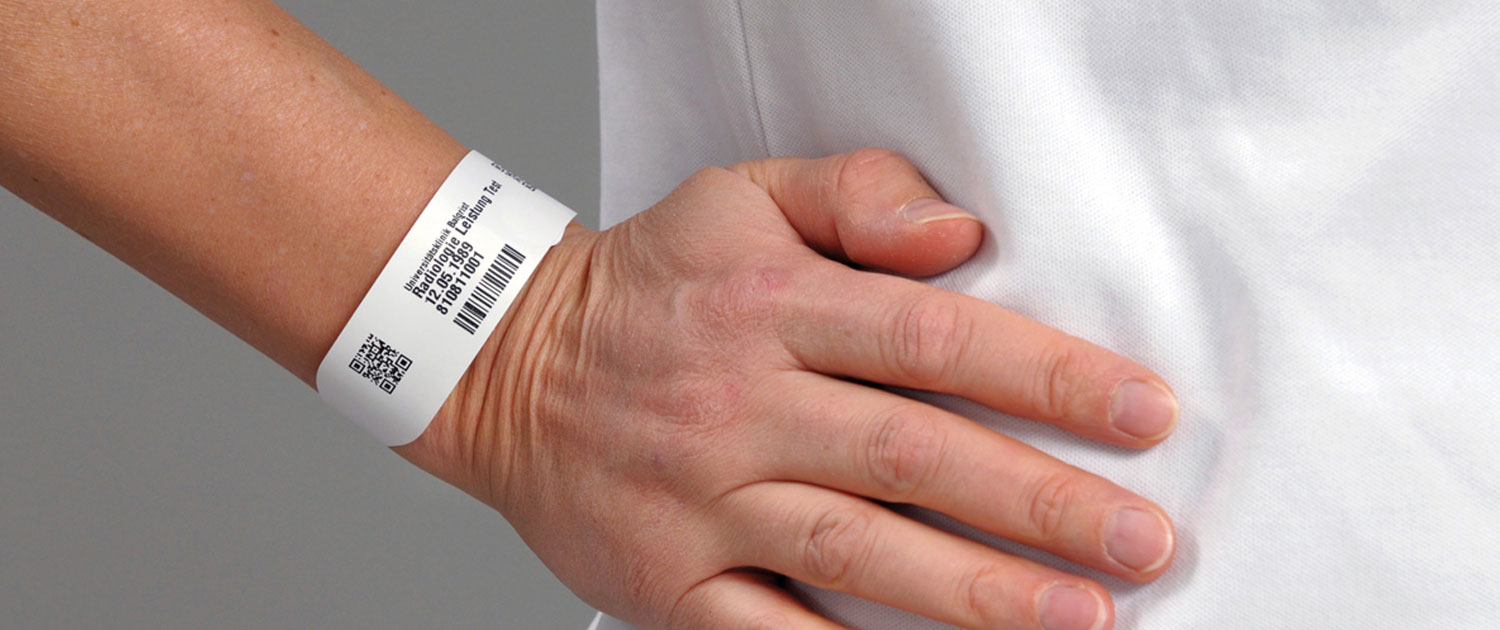How Patient Identification Band Improves the General Patient Experience in Healthcare Facilities
How Patient Identification Band Improves the General Patient Experience in Healthcare Facilities
Blog Article
Simplifying Individual Care With Efficient Identification Bands
The implementation of reliable recognition bands is a pivotal element in boosting client care within healthcare setups. As the landscape of client identification progresses, one must consider the effects of these systems on overall healthcare distribution and client results.
Relevance of Client Identification
Making sure accurate individual identification is critical in medical care settings, as it straight affects the security and quality of treatment given. Misidentification can lead to significant errors, consisting of administering the incorrect medicine, carrying out inaccurate procedures, or miscommunicating essential client info. Such mistakes not only jeopardize person security yet can also result in legal implications and decreased trust fund in health care systems.
Reliable person identification is essential to developing a secure environment where individuals receive customized and suitable treatment. It assists in the accurate documents of clinical histories, allergies, and therapy plans, making sure that doctor have accessibility to important details at all times. Additionally, robust identification procedures help simplify communication among medical personnel, boosting cooperation and lowering the risk of mistakes.

Sorts Of Identification Bands
Identification bands play a vital role in maintaining exact person documents and boosting safety and security within healthcare environments. Various kinds of identification bands are used to satisfy the specific demands and demands of various individual populations.

One more type is the ankle joint band, which is specifically helpful for newborns and infants, making certain that identification remains undamaged even throughout care procedures. Specialized bands, such as those for allergy alerts or fall danger indicators, supply added layers of safety and security by drawing immediate attention to vital individual problems.
Lately, electronic identification bands have actually obtained appeal, incorporating barcodes or RFID modern technology that can be scanned to rapidly fetch client information. These bands enhance process and decrease the risk of human mistake throughout client identification procedures.
Benefits of Efficient Identification
Effective identification of individuals with making use of identification bands adds considerably to overall patient security and care quality. By guaranteeing that each patient is properly determined, healthcare carriers can properly match clinical treatments and procedures to the correct person, lessening the danger of errors. This is especially crucial in environments with high individual turnover, where the possibility for misidentification is higher.
In addition, efficient recognition bands improve interaction among health care teams. Clear and exact client identification cultivates partnership and makes sure that all staff member understand an individual's certain requirements and medical history. This communication is necessary for providing coordinated care, particularly in emergency circumstances where time is vital.

Eventually, efficient recognition via making use of recognition bands not only safeguards patients however also promotes a society of safety within healthcare centers (Patient Identification Band). By focusing on accurate recognition, healthcare companies can enhance end results and enhance the total pop over to this web-site patient experience
Applying Recognition Equipments
While the importance of individual recognition is well identified, the implementation of durable recognition systems poses a facility challenge for medical care companies. Developing reliable recognition systems calls for a detailed method, encompassing technology, employees training, and process combination.
First, companies should pick proper recognition modern technologies, such as barcode scanning, RFID, or biometric systems. Patient Identification Band. These technologies must be reviewed based upon cost, use, and compatibility with existing framework. A pilot program can assist identify prospective problems before full-scale implementation
Next, extensive training for staff is important. All workers must recognize the importance of exact patient recognition and be competent in the usage of the chosen technologies. Regular training updates and analyses can enhance ideal techniques and make certain ongoing conformity.
In addition, health care organizations should establish standardized procedures for individual identification throughout all departments, minimizing discrepancies and improving communication. Normal audits can help determine spaces in adherence to these protocols.

Inevitably, an effective implementation of recognition systems not just boosts individual safety however additionally fosters a society informative post of responsibility and diligence within health care setups, ensuring consistent and trusted person care.
Future Trends in Individual Recognition
Developments in innovation are established to transform client identification methods in medical care settings. The combination of biometric recognition methods, such as fingerprinting and facial recognition, is anticipated to enhance accuracy and safety. These modern technologies can significantly decrease the threat of misidentification, making sure that people obtain the right therapies and medicines.
Furthermore, the execution of blockchain innovation for client records is obtaining traction. This decentralized method can provide a safe and secure and tamper-proof approach for handling individual identities, consequently streamlining accessibility to essential information throughout various healthcare carriers.
An additional fad is the raising usage of mobile health applications that utilize QR codes for client recognition. These applications permit real-time updates and very easy access to client data, equipping healthcare experts to make enlightened choices promptly.
Additionally, man-made intelligence (AI) is positioned to play an essential role in analyzing individual identification information, determining patterns, and forecasting possible identification errors before they occur.
As these modern technologies evolve, they promise not just to improve individual security however also to enhance the overall efficiency of healthcare distribution systems. Welcoming these advancements will certainly be vital for future-proofing person care methods.
Verdict
To article source conclude, effective identification bands are crucial for improving patient safety and care quality within healthcare settings. By decreasing the risks related to misidentification, these bands assist in prompt and precise details access, inevitably improving communication amongst doctor. The implementation of durable identification systems not only cultivates a culture of security however likewise positions medical care establishments to adapt to future fads in individual recognition innovation, guaranteeing ideal end results for individuals in varied medical environments.
As the landscape of patient identification progresses, one have to take into consideration the implications of these systems on overall medical care distribution and individual end results.Effective client identification is basic to establishing a safe atmosphere where people obtain proper and customized treatment. Inevitably, prioritizing effective person recognition strategies not only cultivates a culture of security but also contributes to boosted person outcomes and general fulfillment with medical care solutions.
Efficient recognition of people with the use of recognition bands contributes significantly to total person safety and security and care top quality. The execution of durable recognition systems not just cultivates a culture of safety and security however additionally settings healthcare institutions to adapt to future trends in person identification modern technology, ensuring optimal outcomes for individuals in varied clinical atmospheres.
Report this page